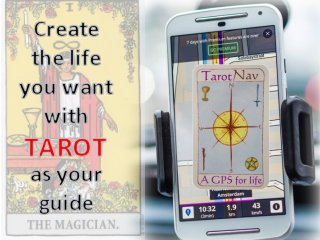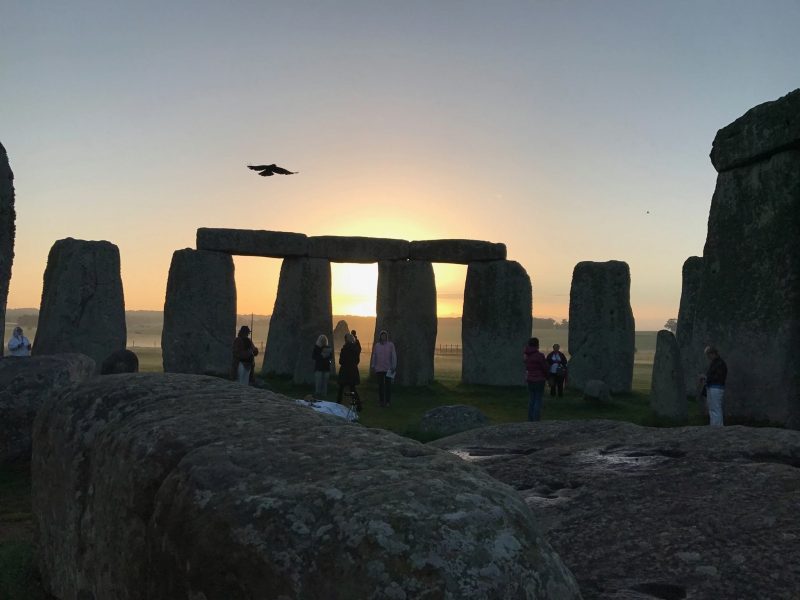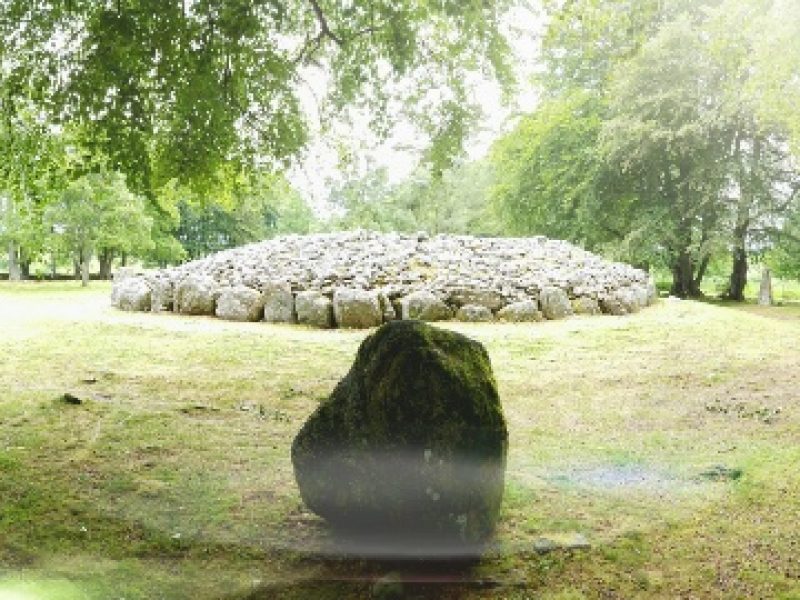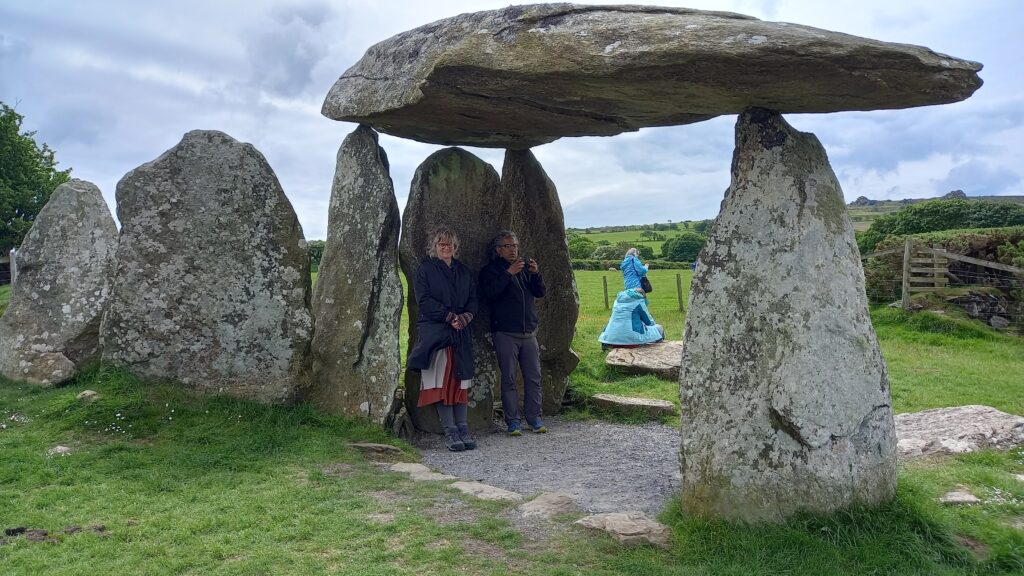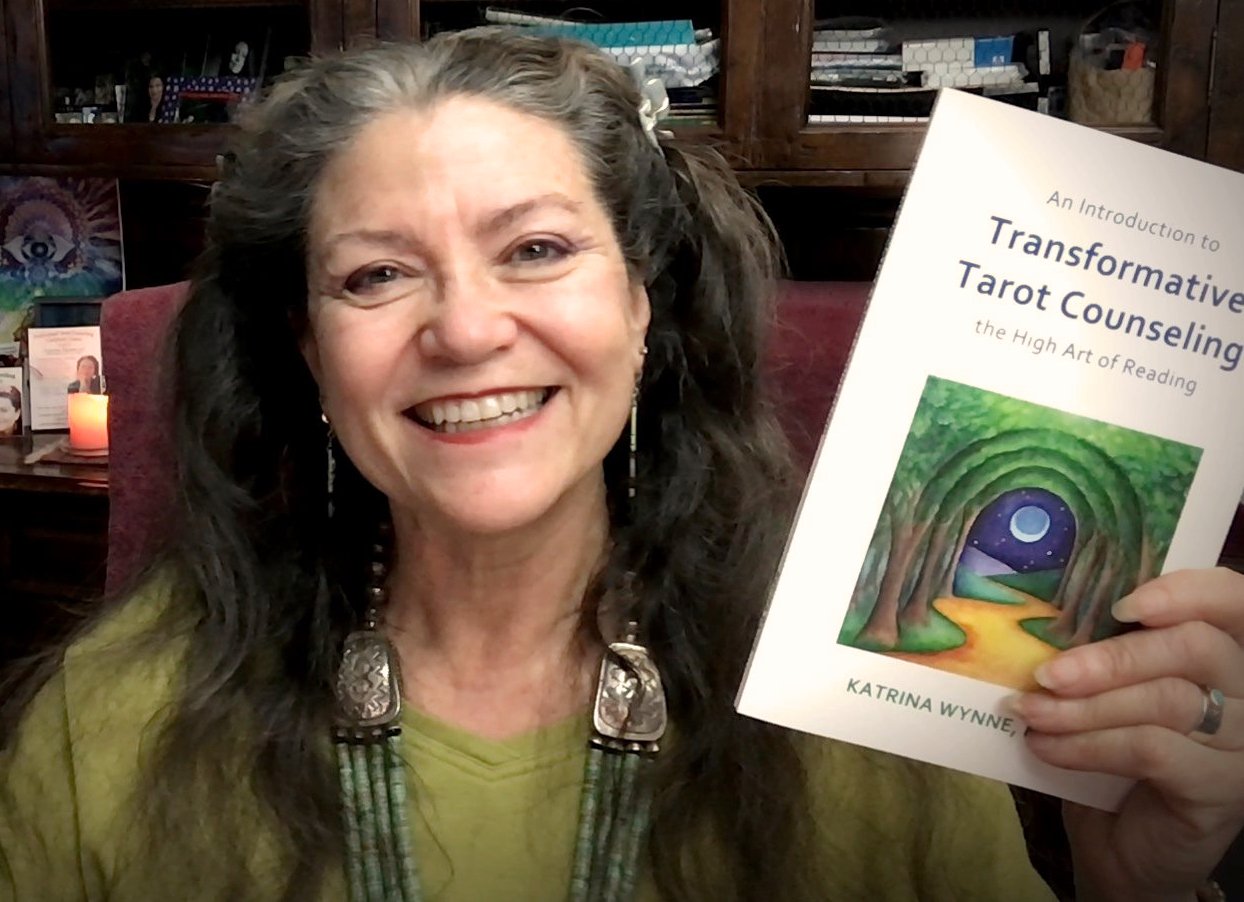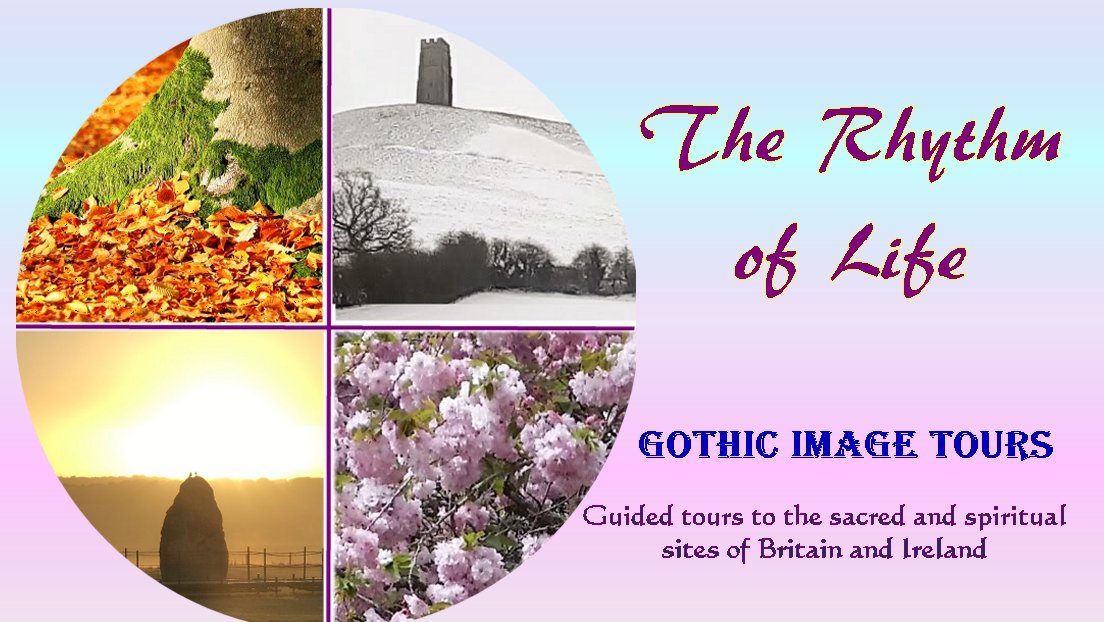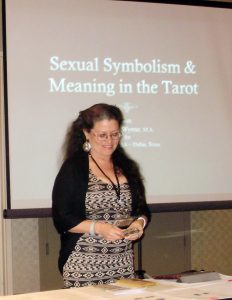
Photo by Paul Nagy.
A picture is worth a thousand words. A famous masterpiece, a child’s drawing, a photo…they all tell a story without saying a single word. They do this through colours, a sense of movement and imagery that hints at more than the object or event they are depicting. The shape of a tree, a dusty landscape, a lush green meadow, a waterfall, a smile, a gesture – every aspect of a picture talks to you in the language of symbols, one that transcends culture, race, religion and country.
Tarot is a visual, symbolic language. Reading the cards is a dance between instinctual response to images on the cards and an understanding of the structure of Tarot and traditional card meanings. Your ability to engage in this dance is enhanced by an understanding of how symbolic language works. In her two Advanced Tarot Reading Skills classes, Katrina Wynne explores the Tarot as a visual symbolic language and shows you simple, yet powerful ways to work with dreams and their symbols.
Of her two classes on Sexual Symbolism and Meaning in Tarot, Katrina says ‘After enjoying this colorful, sometimes titillating, presentation which explores the sensual side of Tarot and other oracles, you’ll never view your cards in the same way.’
LINDA: The use of symbolic language appears to be built into the human DNA. Why do you think this is so?
KATRINA: At one level the answer to this question is very simple, but at another quite complex. In the simplest terms, symbols are a universal language that can be understood by anyone in any country or culture. For example, we can communicate the concept of motherhood by showing an image of a pregnant woman admiring her swollen belly. There will be subtle differences in the way each person responds to the pregnant woman, but in general terms the message is clear and it has been communicated without words.
Anything can assume a symbolic dimension which is universally understood – natural objects such as stones, flowers, trees, fire, water or man-made objects and structures such as houses and cars and geometric shapes (circles, squares, triangles and so on).
Gestures are also symbolic, though you need to be careful because some you take for granted may not always be recognized. You might think a nod always means ‘yes’ and shaking your head from side to side means ‘no’. Be careful in Greece because it’s the other way round – a side to side movement of the head signals ‘yes’, while up and down is ‘no’. The jolt you get from seeing a symbol, such as the head movement for ‘yes’ or ‘no’ reversed, or a smile, inverted into a frown, shows just how much we rely on symbols as a non-verbal form of communication, just how much they are built into our DNA.

The complex answer to the question relates to how humans respond to symbols, how they use them in story-telling, works of art, and divination tools such as Tarot and oracle cards. I love the DNA mandala symbol on the back of James Wanless’ Voyager Tarot cards, reminding us…
“Each one of us is a part of the wholeness, and we each have our own wholeness. It’s very holographic. We are the singularity and the totality.”
Dreams are full of symbols that are inviting us to unfold and integrate into our waking life. Your sub-conscious is trying to get a message through and symbolic language is its favorite tool. Why did that staircase you were climbing suddenly come to an end? How can you behave in a dream in ways you would never act in waking life? This is a fertile area for research and theories – the writings of Sigmund Freud and Carl Jung in particular, have shaped modern approaches to dream interpretation, expanded upon with modern writers, such as Dr. Arnold Mindell in his powerful book, Dreaming While Awake.
LINDA: What are the main levels of symbolism?
KATRINA: The main levels I cover in my Advanced Tarot class are:
- mythic symbolism
- transpersonal, collective or archetypal
- cultural and conventional
- personal.
Joseph Campbell’s concept of The Hero’s Journey encapsulates what we mean by mythic symbolism. He identified common story elements in myths and stories from a wide range of cultures. Symbolically, The Hero’s Journey is about going from the Known to the Unknown, about answering ‘the call to adventure’, something that challenges us to move from our ordinary everyday awareness (the Known) into the Unknown – a realm where we face challenges and temptations, a place where we symbolically experience death and rebirth. We return to the Known enriched by this experience. All elements of The Hero’s Journey can be found in the story of the Major Arcana, as illustrated in my class, Sacred Journey of Your Soul – through the Major Arcana of the Tarot which is available as a recording through Global Spiritual Studies.
Transpersonal symbols extend beyond the individual or personal to encompass wider aspects of humankind, life, psyche or the cosmos. Jung gave us the concept of the ‘collective unconscious’, the realm of archetypal symbols, those that appear in both individual imagination and in the mythologies of cultures. The primordial mother or father are examples of archetypal symbols.
Conventional symbols include signs associated with a particular culture, e.g. a traffic ‘Stop’ light or icons such as the Smiley face. Personal symbols are those unique to an individual, an outer representation of an aspect of their inner awareness. Skin tattoos are a prime example.
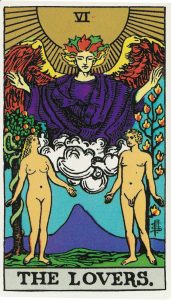
LINDA: Traditional Tarot decks such as the Waite-Smith, use a mixture of conventional and archetypal symbols. Let’s take The Lovers card, for example. What are some of the symbols and how do they help us understand the card?
KATRINA: Conventional symbols found on the Waite-Smith card include objects that most people recognize, such as trees, a mountain, two human beings – one female and one male – a green snake, and Archangel Raphael. On the archetypal level, this symbolizes a relationship (noun), or relating (verb). There is an archetypal lesson on the contrast and union of opposites. The synthesis of these symbols begins to tell the story of the Garden of Eden with Eve and Adam, the Tree of Knowledge and the Tree of Life, as well as the tempting serpent. This raises the level of our understanding to this archetypal passion play, an idea of paradise and what it means to be divided from our source of love and life.
LINDA: A card which usually evokes alarm when it appears is The Tower. In your class on symbols, you refer to this as having ‘oblique symbolic meaning’. What do you mean by that?
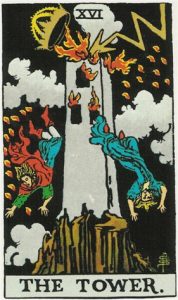
KATRINA: Yes, that’s right…I’m quoting from Arthur Rosengarten’s book, Tarot and Psychology, where he’s talking about the symbolic dimensions of the Tarot. He says that each of the 78 cards ‘carries a specific, differentiated, discrete, and oblique symbolic meaning emanating, as Buddhist teachers are fond of saying, ‘from its own side”.’
The Tower is an excellent example of this. The symbolic meaning of the card is expressed ‘obliquely’, that is, not in a direct way. Rather it emerges ‘from its own side’ complete in itself and not just a sum of the all the discrete symbols within the image – the crown, the colors of the clothing, the free-flowing hair, the Yods, the jagged rocks, the lightning bolt just to name a few.
The Tower can be read as a symbol of timing with the message of ‘Transform or die…now’. It has an immediacy that is out of our control and takes us to a place of no return. Whether this is alarming or not is due less to this symbolic action and more to our attachment to life being the same as before.
LINDA: Would it be fair to say that the images in many contemporary Tarot decks tend to use a mixture of conventional and personal symbols?
KATRINA: Yes…keep in mind that the level of symbols can be personal, conventional, archetypal or universal. There is the intention of the artist, but there is also the impression of the viewer of the cards. One person’s archetypal symbol can be another person’s personal symbol. My advice is to be open to whatever level of meaning is most useful to the querent.
LINDA: You take a particular interest in sexual symbolism and meaning in Tarot. What led you down this path?
KATRINA: A variety of influences…first, just being human and knowing that sex is an essential aspect of life. Tarot is also a beautiful reflection of life with life and sex intimately intertwined. Sex is not only a physical act, but a symbolic relationship. Male and female figures in the Tarot are placeholders for the details that are associated with masculine and feminine qualities, such as action and passivity. Much of the Tarot is what I would call a ‘Dance of Duality’, portrayed with objects, such as a caduceus, with the double helix/snakes dancing around the shaft, or with implied movement, such as the yin-yang symbol, spinning black and white waves with a drop of each within the other.
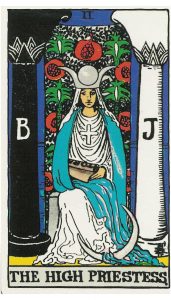
LINDA: Can you give us some examples of sexual symbolism in the Waite-Smith deck and how picking up on this aspect of the imagery adds to an understanding of the cards?
KATRINA: Just look at The High Priestess….as an archetype, she is pure yin, receptive energy, the virginal spirit. The specific symbols that illustrate her deeply feminine nature are the central full moon in her headdress (clitoris), and the water fall (juicy fluid flowing from her vaginal opening), the + cross over her heart (intersection of male and female polarities, the way to a woman’s sex is through her heart), the two blue sides of her robe (inner labia), and the two columns (outer labia).
Now look at The Magician….what is that phallic symbol in his hand and what is he going to ‘manifest’ with it?
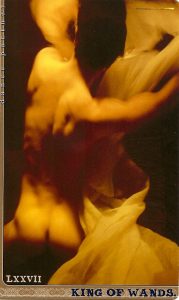
LINDA: Let’s move to examples of sexual symbolism in contemporary decks.
KATRINA: Shelly Corbett has graciously shared a card from her amazing underwater photography deck, Abyssal Tarot. I would categorize this as a sensual deck. The movement implied by the floating objects and the bodies in these cards may bring up emotions for you as you look at them.
LINDA: Because there’s no single way of responding to the symbolism contained in an image, what sort of advice do you have for people who are in the process of learning to read Tarot and Oracle cards? Should they spend a lot of time reading up on symbols or should they simply go with their gut reaction to the images?
KATRINA: Either or both, depending on the preferred style of the reader. For those who are interested in a well-rounded knowledge of their oracular tools, I suggest studying every possible approach to the understanding and meaning of your chosen oracle, developing a personal journal of observations and notes.
As for which comes first, that is also a matter of individual style. My preference is for readers to exercise their intuition and go with a first impression, then immediately go to a reference book to compare their impression with the intended meaning of that image. Both are valid and often complement each other in some way. I don’t stop there… I then suggest that you take this awareness into a walking meditation for the day, noticing how what you noted about your oracle appears in everyday life. Now go back to your journal and bring your ‘experience’ of the lesson on this oracle back together with your knowledge and intuition. This helps you develop a more personal familiarity with your chosen oracle, integrating the many levels of symbolism I’ve talked about.
About Katrina Wynne
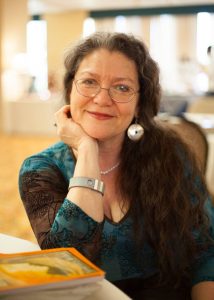
Photo by Theresa Pridemore.
Katrina Wynne, MA, an internationally recognized teacher and professional psycho-spiritual counselor, has guided thousands of souls throughout the world on their sacred journey. She combines 40+ years experience with Tarot and other metaphysical traditions with over 25 years as a mental/spiritual health counselor to support your most wonderful life.
In 1998 Katrina developed her Transformative Tarot Counseling Certification Program in answer to the many requests she received to learn the higher art of reading. Now offered as an exclusive opportunity on Global Spiritual Studies, she presents the key concepts of this program in a variety of formats. For more information about Katrina Wynne, MA, please visit her website and her Global Spiritual Studies page to get the most current information about her classes.
[spacer height=”20px”]Since 1974, Katrina has studied with sex education masters, including James McCary, Mantak Chia (Taoist Sexology), and Margo Anand (Neo-Tantra). As a practicing psychotherapist, she supports her clients as they work through a rainbow of sexual issues from diverse orientations.
Over to you!
Which Tarot decks do you use? Which cards strike you as particularly symbolic and how do they affect you? How did you find Katrina’s description of sexual symbols in The High Priestess card? We’d love to hear from you!
